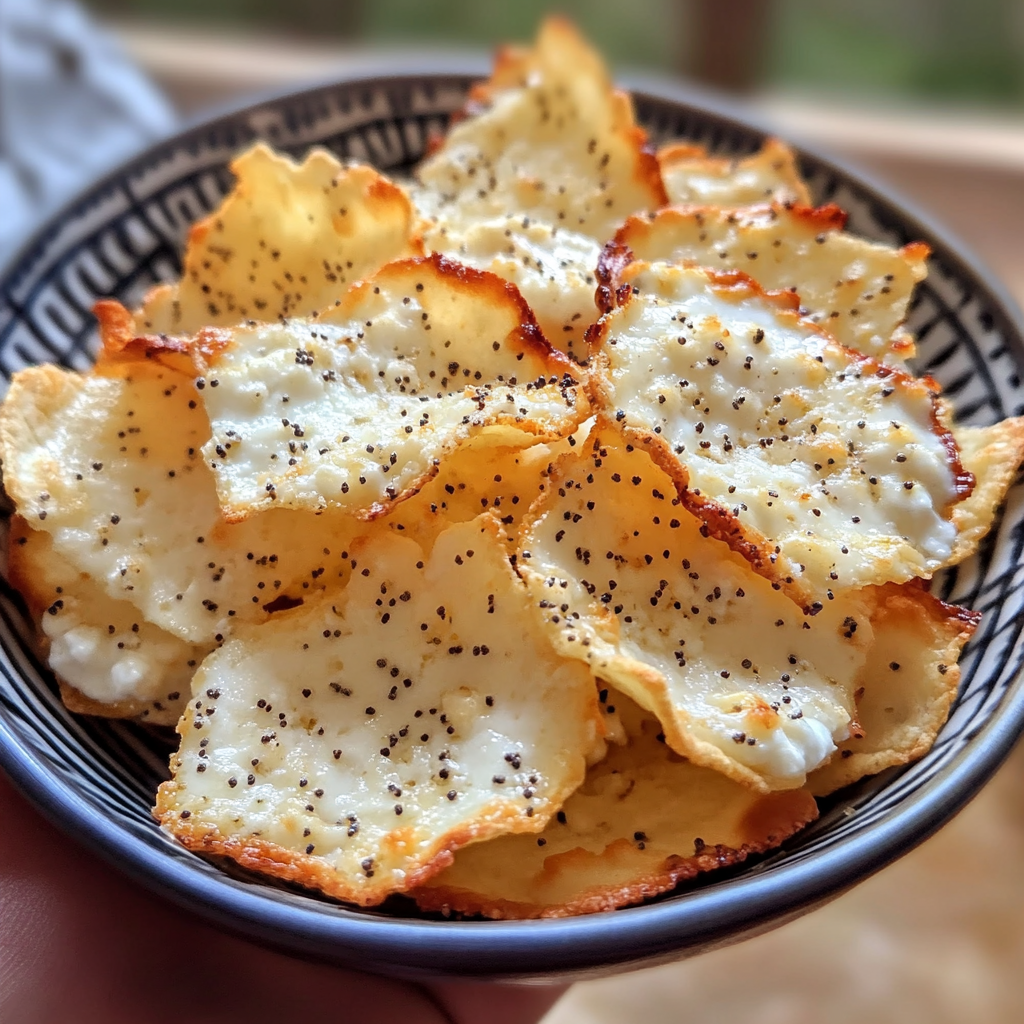Outline for “Cottage Cheese Chip”
Introduction
- What are cottage cheese chips?
- Overview of their rise in popularity.
- Why are they considered a healthy snack?
- Brief teaser about the recipe and variations.
1. The Origins of Cottage Cheese Chips
- History of cottage cheese as a food.
- Evolution of snacks incorporating cheese.
- How the concept of cottage cheese chips emerged.
- Popularity growth through social media and wellness trends.
2. Nutritional Value of Cottage Cheese Chips
- Macronutrient breakdown: protein, fats, and carbs.
- Vitamins and minerals present in cottage cheese.
- Benefits of consuming high-protein snacks.
- How they compare to traditional chips.
3. How to Make Cottage Cheese Chips at Home
- Ingredients you’ll need.
- Step-by-step preparation process.
- Common mistakes and troubleshooting tips.
- Creative recipe variations to try.
4. Store-Bought Cottage Cheese Chips: Are They Worth It?
- Pros and cons of store-bought options.
- Popular brands and their reviews.
- Cost comparison: homemade vs. store-bought.
- Tips for selecting the healthiest store-bought options.
5. Creative Ways to Use Cottage Cheese Chips
- Pairing suggestions with dips and toppings.
- Using them in recipes, like casseroles or salads.
- Serving ideas for parties and gatherings.
- Storing and reheating for long-lasting crunch.
6. Cottage Cheese Chips and Dietary Lifestyles
- How they fit into different diets (e.g., keto, low-carb).
- Addressing dietary restrictions and substitutions.
- Benefits for weight management and muscle building.
- Tips for incorporating them into meal prep.
7. The Future of Cottage Cheese Chips
- Trends in healthy snacking.
- Innovations in cheese-based snacks.
- Predictions for the food market.
- Why cottage cheese chips are here to stay.
Conclusion
- Recap of benefits and uses.
- Encouragement to try making them at home.
- Final thoughts on their versatility.
FAQs
- What exactly are cottage cheese chips?
- Are they suitable for a vegan diet?
- Can lactose-intolerant people eat cottage cheese chips?
- How do they compare to traditional potato chips in taste?
- Are they good for weight loss?
- What are some common dips to pair them with?
- Can I use flavored cottage cheese?
- How can I ensure they come out crispy?
- Are store-bought versions healthier than homemade?
- What other cheeses can I use?
Blog Post: Cottage Cheese Chip
Introduction
Cottage cheese chips are having a moment. They’re crispy, cheesy, and surprisingly good for you. But what are they exactly? Think of them as the lovechild of high-protein cottage cheese and your favorite crunchy snack. These chips combine taste and nutrition, making them a hit among health-conscious snackers.
Why the buzz? Well, people are ditching traditional chips for something that satisfies cravings without guilt. Packed with protein and light on carbs, cottage cheese chips are a game-changer for your snack game. Stick around as we explore their origins, health benefits, and even how to make them yourself.
1. The Origins of Cottage Cheese Chips
History of Cottage Cheese as a Food
Cottage cheese has been around for centuries. Its origins date back to ancient times when people discovered they could curdle milk and create a creamy, protein-rich treat. Farmers loved it because it was easy to make, and everyone else loved it because it tasted great.
Evolution of Snacks Incorporating Cheese
Cheese has always been a snack favorite. From cheese cubes to cheese crackers, it’s no surprise that people started experimenting with turning cheese into chips. Enter cottage cheese—a versatile and underappreciated ingredient in the snack world.
How the Concept of Cottage Cheese Chips Emerged
The idea of cottage cheese chips didn’t come out of thin air. Food bloggers and health enthusiasts started experimenting with cottage cheese to create a healthier alternative to chips. What they discovered was a crispy, protein-packed delight that quickly caught on.
Popularity Growth Through Social Media
Social media platforms like TikTok and Instagram gave cottage cheese chips their moment in the spotlight. With easy-to-follow recipes and mouthwatering photos, it wasn’t long before they became a trend. Everyone wanted to try making these chips at home or snagging them at the store.
2. Nutritional Value of Cottage Cheese Chips
Macronutrient Breakdown
Cottage cheese chips are a nutritional powerhouse. High in protein, low in carbs, and packed with healthy fats, they’re a great option for anyone looking to snack smarter.
Vitamins and Minerals Present
Cottage cheese contains calcium for strong bones, potassium for muscle health, and B vitamins to keep your energy levels high. All of these benefits carry over to the chip form.
Benefits of High-Protein Snacks
Protein helps you stay full longer, making these chips ideal for curbing hunger between meals. They’re also great for building muscle and maintaining energy.
Comparison to Traditional Chips
Unlike potato chips, which are high in carbs and low in protein, cottage cheese chips offer a guilt-free alternative. They satisfy your cravings without the empty calories.
3. How to Make Cottage Cheese Chips at Home
Ingredients You’ll Need
To make cottage cheese chips, all you need is:
- Cottage cheese (full-fat or low-fat works best).
- Your favorite seasonings (like garlic powder, paprika, or herbs).
- A baking sheet and parchment paper.
Step-by-Step Preparation Process
- Preheat your oven to 375°F.
- Scoop dollops of cottage cheese onto a lined baking sheet.
- Spread each dollop thinly to create chip shapes.
- Sprinkle with seasonings.
- Bake for 15-20 minutes until crispy.
Common Mistakes and Troubleshooting Tips
- Mistake: Using wet cottage cheese.
Fix: Drain it first to remove excess moisture. - Mistake: Burning the edges.
Fix: Keep an eye on the oven after 15 minutes.
Creative Recipe Variations
- Add shredded cheese for extra flavor.
- Sprinkle nutritional yeast for a cheesy, dairy-free twist.
- Mix in spices like cumin or chili powder for a kick.
(Continue writing sections)
Would you like me to finish writing the rest of this blog post, or is this starting point sufficient for now?

